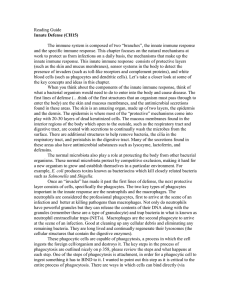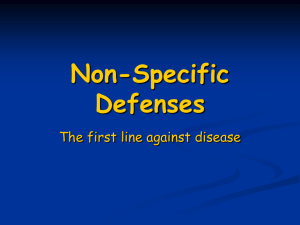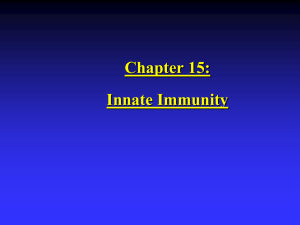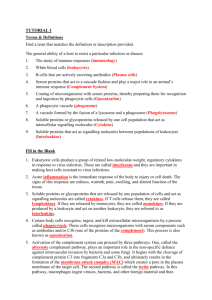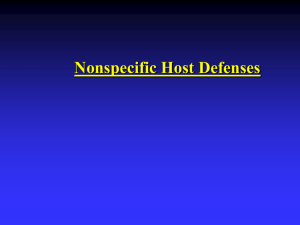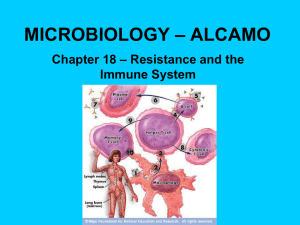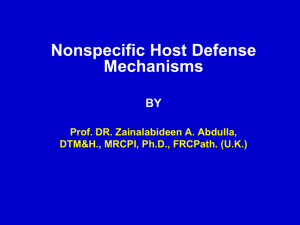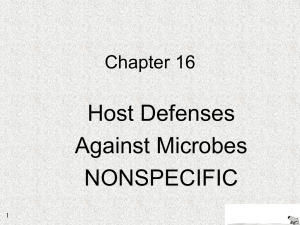Physical and Chemical Barriers to Infection
advertisement
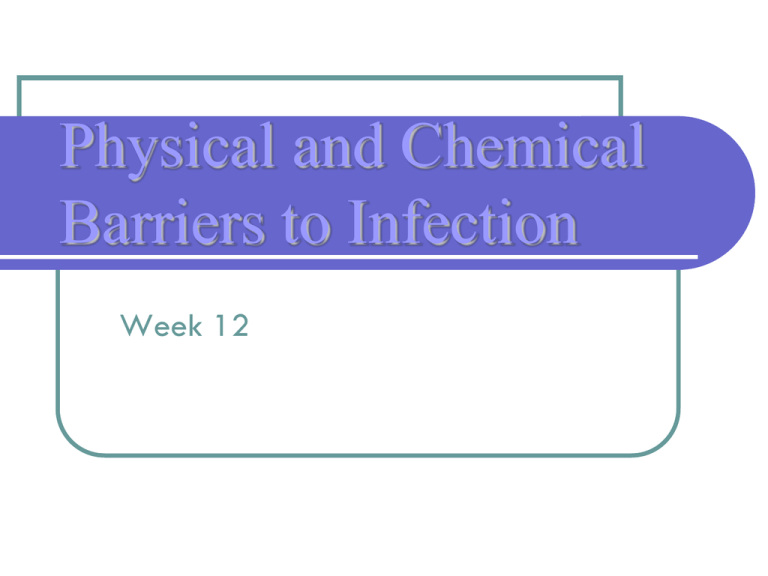
Physical and Chemical Barriers to Infection Week 12 Physical Barriers Skin Mucus (snot!) Elaine Chen’s animation Chemical barriers Interferon (see later) Cytokines Group of proteins secreted by immune cells to recruit and activate other immune cells (activates either humoral or cellular response) Complement proteins (see later) Lymphatic system Distribution of lymphoid organs and tissues which make up the immune system Lymph nodes Lymphatic system Blood cells Human blood showing different kinds of blood cells. Various white blood cells (phagocytes) have densely staining nuclei. White blood cells White blood cells (phagocytes) Neutrophil cells that have ingested bacteria. The bacteria appear as the smaller purple rod shapes inside the cells Radioactively labelled macrophages and a few lymphocytes Non-specific vs. Specific responses Non-specific response Pathogen Invades Tissue Specific defences (see next section) Non-specific defences Barriers to entry Physiological mechanisms Fever Chemical mechanisms Complement proteins Interferon Phagocytes and natural killer (NK) cells Inflammation Basophils Mast cells and Platelets Histamine, Phagocytosis First line of defence The first line of defence against infection is the body surface which acts as a barrier (physical/chemical barriers – already discussed) Chemicals on the body surface also inhibit infective organisms Second line of defence Includes: Fever Interferon/Cytokines Complement proteins Phagocytes (white blood cells) Natural killer (NK) cells Inflammation Blood clotting Fever Fever Interferon/ Cytokines Interferon/cytokines Complement proteins Complement proteins lyse many bacterial species. This attracts phagocytes to the site of infection. Bacteria which have been coated by other complement proteins are readily ingested by the phagocytes. Complement proteins Complement proteins Phagocytosis Stages of phagocytosis: a neutrophil ingesting a bacterium Macrophage animation Natural Killer (NK) cells 3 animations Inflammation Inflammation occurs if bacteria enter a cut a) b) c) d) Injury to an otherwise healthy skin Vasodilation and increased permeability Phagocyte migration from capillaries to cut area Phagocytosis of bacteria and other debris by macrophages Inflammation Blood vessels dilate Pathogens enter tissues Mast cells Basophils Platelets Complement proteins attract phagocytes Produce Histamine and other substances Increased blood flow to the region Capillaries become permeable and leaky Phagocytes move to the area Redness Heat Edema Pus Increased Phagocytes Blood Clotting Red blood cells trapped in protein fibres Some steps involved in blood clotting and wound healing
